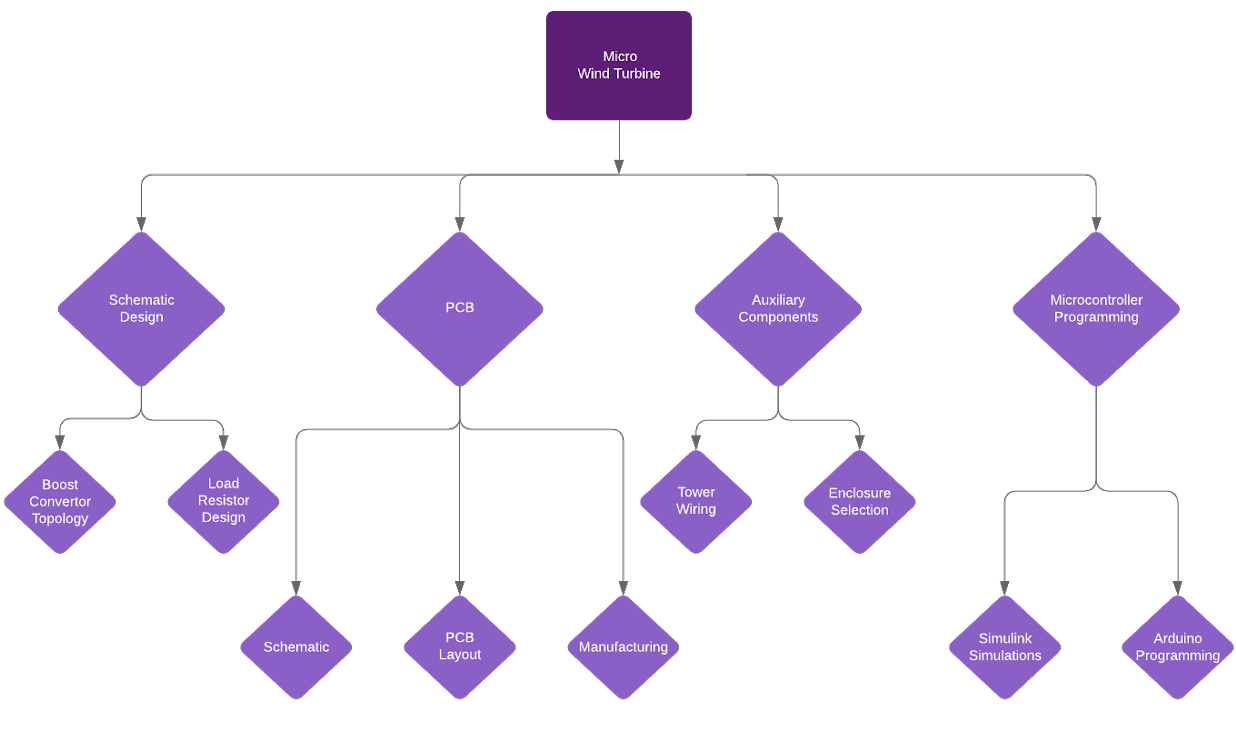
Component Selection
All parts were selected with the goal of securing a low cut-in speed for the turbine while maintaining within a $500.00 budget. To do this, mainly components of low forward-voltage were used.
Off-the-shelf, packaged components were avoided (besides the three-phase rectifier) to ensure optimal low forward voltage.
A MAD 5012 generator was selected for its high Kv rating and low torque.
The system PCB was confined to a 6" x 6" space to minimize cost.

